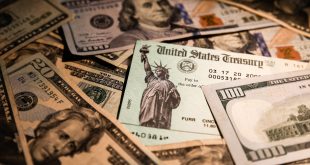Gold price was higher on Tuesday following two sessions of declines with support from a weaker US Dollar even as bond yields climbed. Wall Street’s major indexes lost ground as investors grew concerned again that the Federal Reserve would keep interest rates higher for longer as fears of further banking sector failures faded. At the time of writing, the Gold price is trading at $1,973 and has traveled between a low of $1,949 and $1,975.
For the second day in a row, the US Dollar was declining against a variety of other currencies as investors’ desire for riskier currencies increased as concerns about the banking system lessened. Over the weekend, there were no new indications of bank failures, which is encouraging risk taking and depressing the value of the US dollar. The decision by First Citizens BancShares to acquire all of the deposits and loans of the Silicon Valley Bank improved risk appetite.
The failure of Silicon Valley Bank would have caused a $20 billion damage to a government-run insurance fund, but US authorities announced on Monday that they would support a plan for regional lender First Citizens BancShares to purchase the failing institution. Shares of First Citizens increased by more than 53% on Monday during Wall Street trading.
Top US bank regulators were grilled by US senators on Tuesday in Washington, DC. As he rebuffed accusations from senators who accused bank watchdogs of ignoring warning signs, Michael Barr, the head of the Federal Reserve’s bank regulatory agency, told a Senate panel that Silicon Valley Bank performed a “poor” job of managing risk before to its failure.
Investors’ attention returned to inflation threats and the effects of rising interest rates from the Fed even though the testimony seemed to indicate that the bank’s problems might be isolated. ´´ The probability of a 25 bp walk at the upcoming FOMC meeting, according to WIRP, is about 55% on May 2-3.
Following that, the cuts take centre stage. By year’s end, about two cutbacks are anticipated. Even two cuts appear extremely implausible, but they are down from the 4-5 cutbacks that were anticipated at the height of the banking crisis earlier this month. In this context, Jerome Powell stated following the Fed’s decision on March 22 that rate decreases are simply not anticipated this year.
US Treasuries benchmark 10-year yields moved higher on Tuesday but pared gains after the Treasury Department saw solid demand for an auction of five-year notes.
 Noor Trends News, Technical Analysis, Educational Tools and Recommendations
Noor Trends News, Technical Analysis, Educational Tools and Recommendations





